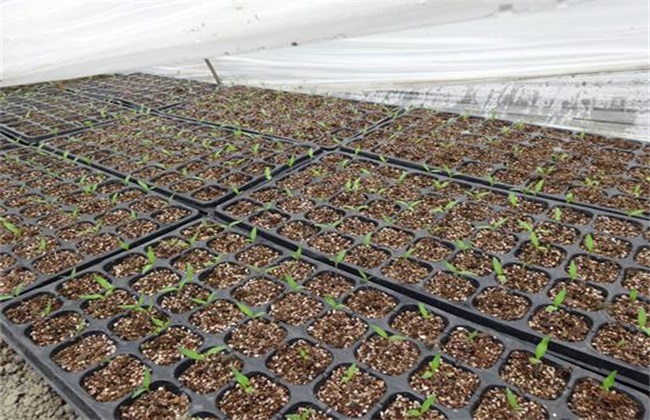Causes and control methods of continuous cropping of spring onions
Vegetable growers all know that you can't grow a crop for a long time in a piece of land, or there will be continuous cropping harm, and the same is true of chives that are common in our lives. If the continuous cropping of chives is light, the growth of the tree is not enough to affect the yield, and the heavy trees fall off in a large area or even basically no harvest, so what is the cause of the continuous cropping obstacle of parsley? How to prevent and cure it? Let's get to know it.

1. Causes of continuous cropping obstacles of coriander
1. Soil acidification
The yield of chives is high, up to 6000-10000 kg per mu, and a large amount of yield also takes away base elements such as calcium, magnesium and potassium from the soil. It leads to excessive consumption of trace elements in the soil and makes the soil acidified. In addition, with the application of a large amount of acid fertilizer, with the increase of cultivation years, soil acid root accumulated and cultured, resulting in soil acidification. Excessive application of nitrogen fertilizer and compound fertilizer is also very easy to cause nitrogen nitrification and acidification, resulting in the increase of soil acidity.
2. Soil salinization
Similar to soil, soil salinization is mainly caused by fertilizer and water management. excessive application of chemical fertilizer leads to the inability of coriander to absorb, and salt accumulates on the surface of the soil, resulting in physiological thirst of chives. After the application of human and animal feces and urine, a large amount of ammonia volatilization is decomposed, salt remains in the soil surface, watering often watering, soil moisture is high, resulting in salt accumulation on the surface. Watering too frequently causes the soil to agglomerate, salt rises to the plough layer with water, and salt accumulates when the water evaporates.
3. Element deficiency
The formation of fertilization is single, only applying chemical fertilizer, ignoring the application of other elements and trace elements, excessive accumulation of nitrogen and phosphorus elements in the soil over a long time, and serious imbalance in the proportion of trace elements, which will inhibit the absorption of other elements by coriander, resulting in nutritional imbalance, forming element deficiency disorders, and directly affecting the quality and yield of chives.
4. Soil-borne diseases
The main soil-borne diseases of coriander are downy mildew, gray downy, leaf spot, purple spot, leaf blight, root rot, Verticillium wilt and so on.
II. Prevention and control methods
1. Crop rotation and crop change
The soil acidification, salinization and soil-borne diseases of chives can be rotated with rice for 2 years, and then coriander can be planted for 2-3 years, which can play an excellent effect on acid washing, salt washing and disease control, and reduce the occurrence of soil acidification, salinization and soil-borne diseases.
2. Prevention and control of diseases
Disinfecting the soil before planting can kill most of the soil-borne germs. when diseases are found, different pesticides should be sprayed according to the specific diseases.
The above is the introduction of the causes and control methods of continuous cropping of chives. I hope it can help you. If you want to know more about it, please pay attention to us.
Related
- Where is it suitable to grow horseradish in China? it is expected to see the middle altitude horseradish in Alishan.
- How to prevent tomato virus disease reasonably? (Control methods included)
- Many people like to plant towel gourd on the balcony. What are the main points of this method and management?
- What crops can chili peppers be mixed with?
- Fertilization techniques and matters needing attention in Tomato
- What are the grafting techniques for peach seedlings in spring?
- Harm and control methods of root swelling disease of Chinese cabbage
- What are the pests of sweet potatoes? How to prevent and cure it?
- Symptoms, causes and Control methods of navel Rot in Tomato
- The cause of "Cucumber rotten bibcock" in Farmers' planting Cucumber and its Control Plan



